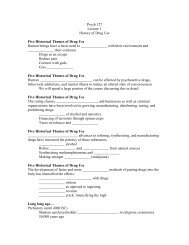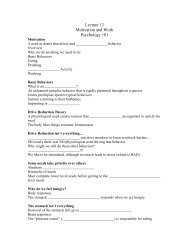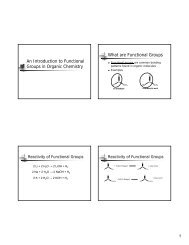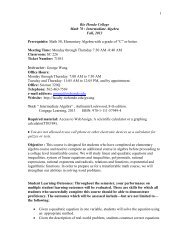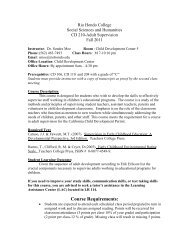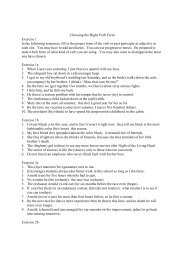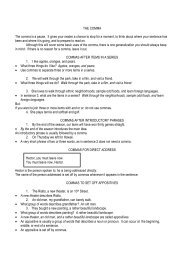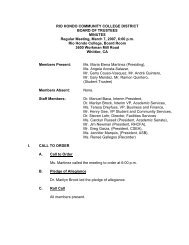You also want an ePaper? Increase the reach of your titles
YUMPU automatically turns print PDFs into web optimized ePapers that Google loves.
<strong>Chemistry</strong> <strong>120</strong><br />
Chapter Ten <strong>Notes</strong><br />
Electrons & Energy Levels<br />
• Evidence suggested to scientists studying atomic structure that electrons “orbit” around the<br />
nucleus in specific energy levels (also called shells).<br />
◦ The farther the energy level is from the nucleus, the higher the energy of its electrons.<br />
• Normally, electrons “fill up” the lower energy levels first, and as new electrons are added they<br />
go into higher and higher energy levels.<br />
◦ An atom is said to be in the ground state when this is true.<br />
• An energy source, such as light or heat, can give electrons the energy necessary to “jump”<br />
from its energy level to a higher one.<br />
◦ In this situation, the atom is said to be in an excited state.<br />
Emission of Light<br />
• An atom in the excited state is unstable and must release the energy it gained in the first<br />
place to return to the ground state.<br />
◦ According to the Law of Conservation of Energy, this extra energy cannot simply<br />
disappear<br />
• One way in which this is accomplished is for the atom to give off this energy as light. This<br />
process is called emission.<br />
◦ The released light is called a quanta (energy packet) or a photon.<br />
• Excited electrons return to lower energy levels.<br />
◦ Depending on the atom itself and which energy levels are involved, EM radiation of<br />
different wavelengths are given off.<br />
Example<br />
Suppose that a photon has 2.45 × 10 -19 J of energy.<br />
(a) What is its wavelength in meters<br />
(b) What is its frequency in s -1 <br />
(c) What type of EM radiation is this<br />
So What is Light, Really<br />
• The answer to this is not as simple as you might think<br />
• Light (EM in general) is correctly described as both<br />
◦ Particles (photons)<br />
◦ Waves<br />
• Light is not one or the other; it is both simultaneously!<br />
10-2




